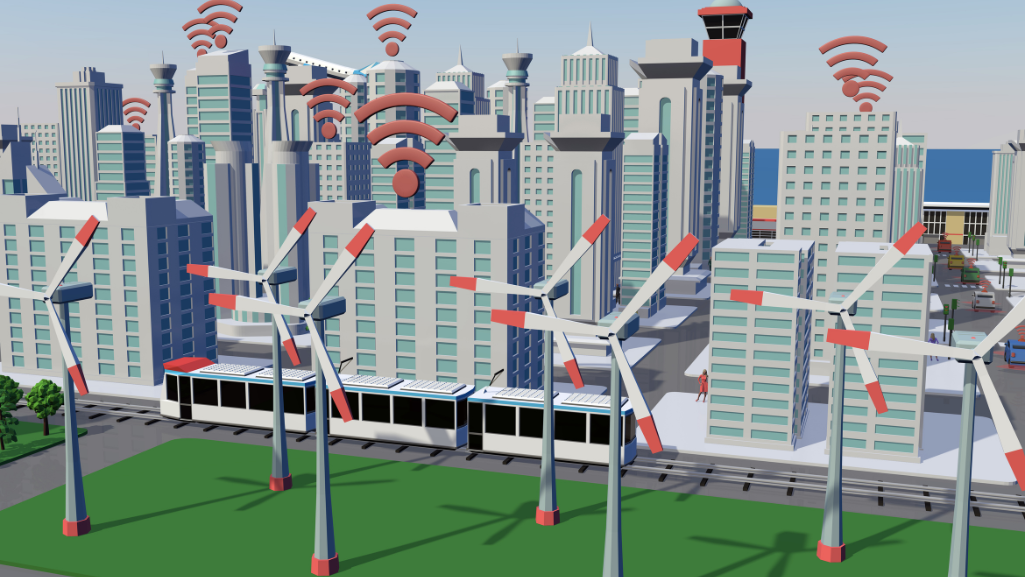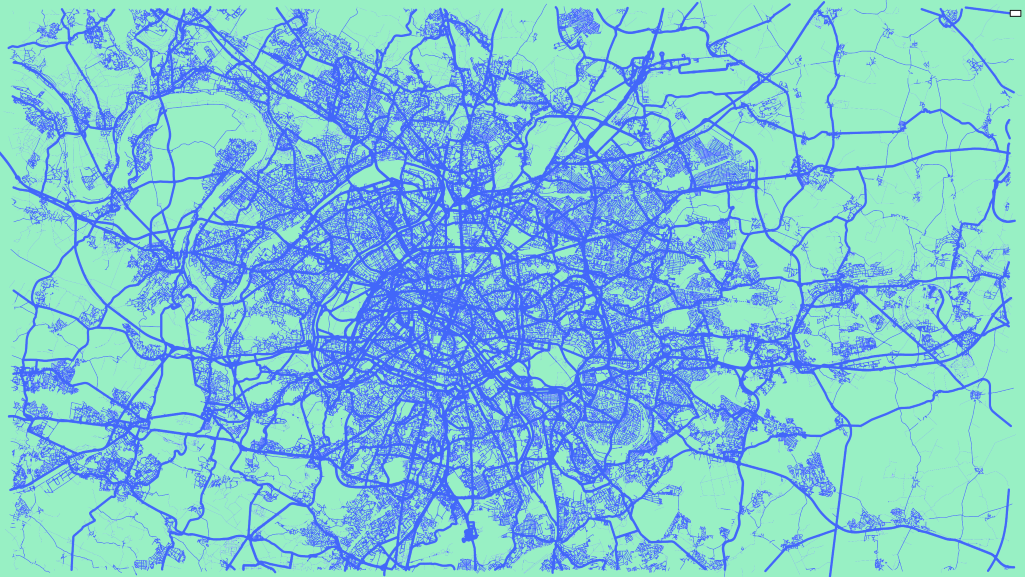Summer 2024 brings 2 sporting spectacles to Europe: UEFA Euro 2024 in Germany and the Olympics in Paris, France. These events require meticulous planning, especially for transporting millions of spectators. Here’s how each host nation is tackling the challenge and how digital tools support this endeavor.
Germany’s Sustainable Mobility Strategy for UEFA Euro 2024
With the UEFA Euro 2024 set to commence in a few weeks, Germany is bracing for an influx of spectators across ten cities. To manage the anticipated 2.7 million stadium attendees and approximately 7 million guests in fan zones and public viewings, ermany’s Euro 2024 mobility plan prioritizes sustainability with a two-pronged approach: reducing reliance on private cars and bolstering public transportation options.
A central pillar of the mobility strategy is promoting train travel for European Championship visitors. Fans attending matches will benefit from discounted train travel during the tournament. Additionally, 14 special trains offering approximately 10,000 extra seats daily will be deployed. To entice international fans, discounted Interrail Passes are being offered, promoting sustainable cross-border travel.
Match tickets will include access to public transportation within the respective host city. To handle the anticipated surge in passengers, local transport operators are ramping up bus, tram, and suburban train services during the Euros.
Eco-conscious fans will appreciate the focus on cycling and e-scooters for stadium and fan zone access. All ten cities are actively promoting these options by increasing bike rental availability and installing more e-bike charging stations throughout the city.

To complement its focus on sustainable mobility, Germany has implemented a special traffic management concept to prevent gridlock on the roads during Euro 2024. Non-essential construction projects will be restricted within a 50-kilometer radius of the venues. To discourage car-use, traffic-calmed zones will be established in residential areas. Additionally, parking availability will be reduced, and parking fees will be increased to further incentivize alternative transportation options.
In major cities like Hamburg, Leipzig, Berlin, and Frankfurt, fan parking will be eliminated altogether at the stadiums.
For comprehensive information on fan travel during Euro 2024, visit the UEFA website.
Paris’s Active Mobility Approach for the Olympics
Paris builds on its people-centric urban planning approach also for the Olympics. Anticipating millions of visitors during the Games period, the metropolitan region is gearing up for significant mobility challenges, with a focus on prioritizing pedestrians and cyclists.

A significant aspect of Paris’ plan involves heavily restricting car traffic on 185 kilometers of roads in the Île-de-France region. Designated red zones, particularly near Olympic venues, will be completely closed to private vehicles, prioritizing the safety of pedestrians and cyclists.
Paris is taking a bold step to become the “first cycling Games in history” according to Florent Bardon, the national mobility coordinator for the Games. The city is expanding its cycle paths to a total of 415 kilometers, ensuring that all Olympic venues are accessible via protected cycling routes. Additionally, 10,000 new bicycle parking spaces are being installed, and the popular bike-sharing scheme is being significantly expanded with 3,000 new Vélib’ bikes to be operational by summer.
While prioritizing active mobility, public transport will also play a pivotal role in the Olympic mobility mix. Bus, metro, and train operations will be bolstered by 15% compared to normal summer traffic levels in the Paris region. This will ensure efficient movement of spectators across the city, minimizing reliance on personal vehicles.
Mobility partner Toyota will contribute to seamless movement for all by deploying around 250 zero-emission electric Accessible People Movers (APM) to support athletes, organizers, volunteers, and spectators with disabilities, including wheelchair users.
While sustainable mobility takes precedence, Paris is also prepared to manage car traffic effectively. Real-time data analytics powered by PTV technology enable the city to monitor the main road network effectively and enhance the reliability of live traffic updates.
A website provides the most important information for travel planning during the Olympics.
Smart Software for a Smooth Flow
“Last year, Taylor Swift’s US concerts garnered attention not only for her performances but also for the traffic chaos they caused”, said Christian U. Haas, CEO of PTV Group part of Umovity. “A study revealed that traffic delays surged by as much as 847% on the roadways surrounding the concert venues.”
While real-time traffic management plays a crucial role in preventing chaos at major events, meticulous planning well in advance is equally important. This is where modelling and simulation software become essential tools for organizers.
Christian U. Haas explains the benefits: “Software like PTV Visum and PTV Vissim allow organizers to analyze existing transportation infrastructure to identify its capacity and optimize resource allocation for buses, shuttles, and other options. This data-driven approach allows planners to make informed decisions about necessary improvements and adjustments to accommodate the influx of visitors.”
For instance, when Istanbul bid for the 2020 Olympics, PTV software was used to simulate the effectiveness of a proposed shuttle bus system (see video on the right).
Planners can test various scenarios and mobility strategies in a virtual environment. This allows them to evaluate the impact of road closures, dedicated event lanes, or promoting alternative transportation like public transit, cycling, and walking.
Security is paramount at large stadiums and event venues. Here, too, simulation software plays a vital role. Crowd simulations allow planers to simulate human walking behavior, identify bottlenecks that may lead to unnecessary waiting times, and model escape routes, emergency exits and evacuation scenarios.
This helps identify potential dangers and allows for adjustments to escape routes and emergency exits, maximizing safety and comfort for attendees.
A real-world example comes from the 2014 FIFA World Cup in Brazil. Renovations were planned for six stadiums, but initial designs resulted in estimated evacuation times exceeding safety standards. PTV Viswalk was used to model crowd movement and propose modifications that ensured a safe and enjoyable experience for spectators.
“Our software operates behind the scenes to anticipate challenges, develop effective strategies, and enhance the overall experience for participants and residents alike”, said Christian U. Haas. “Just as Transport for London optimized traffic during the 2012 Olympics using our software, other cities and venues are currently utilizing our tools to prepare for their major events.”



